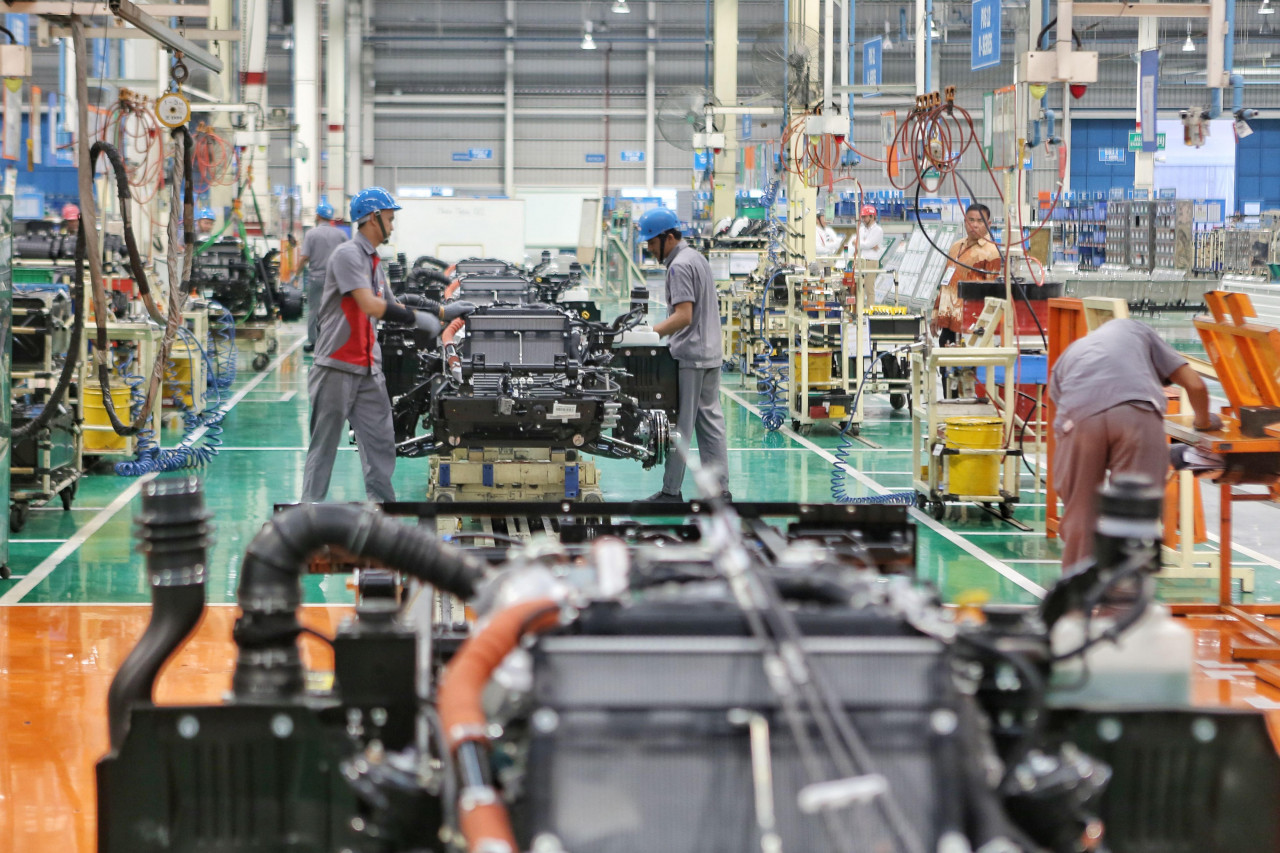Indonesia’s factory activity hits six-year high
Indonesia’s manufacturing activity rose to its highest level since July 2014, as the sector continued its gradual recovery from the pandemic-induced downturn for four consecutive months
Change Size

I
ndonesia’s manufacturing activity rose to its highest level since July 2014, as the sector continued its gradual recovery from the pandemic-induced downturn for four consecutive months, although domestic demand is expected to remain slow and extended restrictions still pose risks going forward.
The country’s manufacturing Purchasing Managers’ Index (PMI) further rose to 52.2 in January from 51.3 in December last year, according to business information provider IHS Markit on Monday. A reading above 50 reflects an expansion from the previous month.
“The Indonesian manufacturing sector remained on the path to recovery at the start of 2021, with growth of output and new orders among the best in the decade-long survey so far,” IHS Markit economist director Andrew Harker was quoted in the press release as saying.
“These trends have given a further boost to confidence, which was at the highest in four years at the start of the year.”
The manufacturing sector, which contributes almost 20 percent of the gross domestic product (GDP), has taken a hard hit from the COVID-19 pandemic and shrunk 4.31 percent year-on-year (yoy) in the July–September period last year.
In 2021, the government is expecting the sector to rebound and grow almost 4 percent yoy, according to Industry Minister Agus Gumiwang Kartasasmita earlier in January.
Harker added that further reductions in employment remained the one negative aspect in the sector despite the expansionary trend in general.
“This highlights that while progress on the road to recovery has been made, there is still some way to go before the lost activity from last year can be made up,” said Harker.
In August last year, the number of workers in the manufacturing sector was recorded at 17.48 million, marking a reduction of around 1.71 million workers, or 8.91 percent, from August 2019, Statistics Indonesia (BPS) data show.
IHS Markit also reported that manufacturers were still seeing delays in delivery due to pandemic restrictions, which disrupted shipping and led to raw material shortages. Output prices therefore rose for three consecutive months as manufacturers passed increases in input costs to customers.
The government recently extended the public activity restrictions (PPKM), which limit capacity and operational hours of public places across dozens of cities and regencies in Java and Bali, to Feb. 8.
However, President Joko “Jokowi” Widodo has said that the measures, which came into effect on Jan. 11 and are more lenient than the government’s previous large-scale social restrictions (PSBB), failed to bring the desired result of curbing the country’s coronavirus caseload.
The country saw more than 10,300 additional confirmed COVID-19 cases on Tuesday, rounding the total nationwide tally to nearly 1.1 million cases.
The President’s statement renewed uncertainty in the sector and the economy as a whole as to whether the government was planning to further tighten the restrictions, said Andry Satrio, an economist at the Institute for Development of Economics and Finance (Indef).
“If it is going to be a stricter restriction, this may indicate that consumers will hold their consumption when the mobility restriction is tightened,” Andry told The Jakarta Post in a voice note on Tuesday.
While the growth in manufacturing PMI often goes in line with economic growth, Andry said economic recovery in the first quarter hinged on the success of curbing the pandemic in the first quarter so the economy “will not lose momentum”.
The recovery trend in the manufacturing sector was expected to continue throughout the year for export-oriented manufacturers given the uptick in global demand, especially in countries that had eased their pandemic restrictions, said Shinta Kamdani, the deputy chairwoman of the Indonesian Chamber of Commerce and Industry (Kadin).
The value of non-oil and gas exports from the manufacturing sector was up 2.95 percent to US$131.13 billion last year, according to BPS data.
However, the sector relied more heavily on demand at home as the share of manufacturers participating in the global supply chain was smaller than the share of those with an orientation toward the local market.
“The biggest problem is that we do not see a promising driver for domestic consumption between Chinese New Year and Ramadan, so consumption is likely to fall as usual,” Shinta told the Post via text message on Tuesday.
“The plan to tighten [mobility restrictions] is still ‘on the table’ and this will definitely affect industries’ performance directly, especially labor-intensive ones.”









